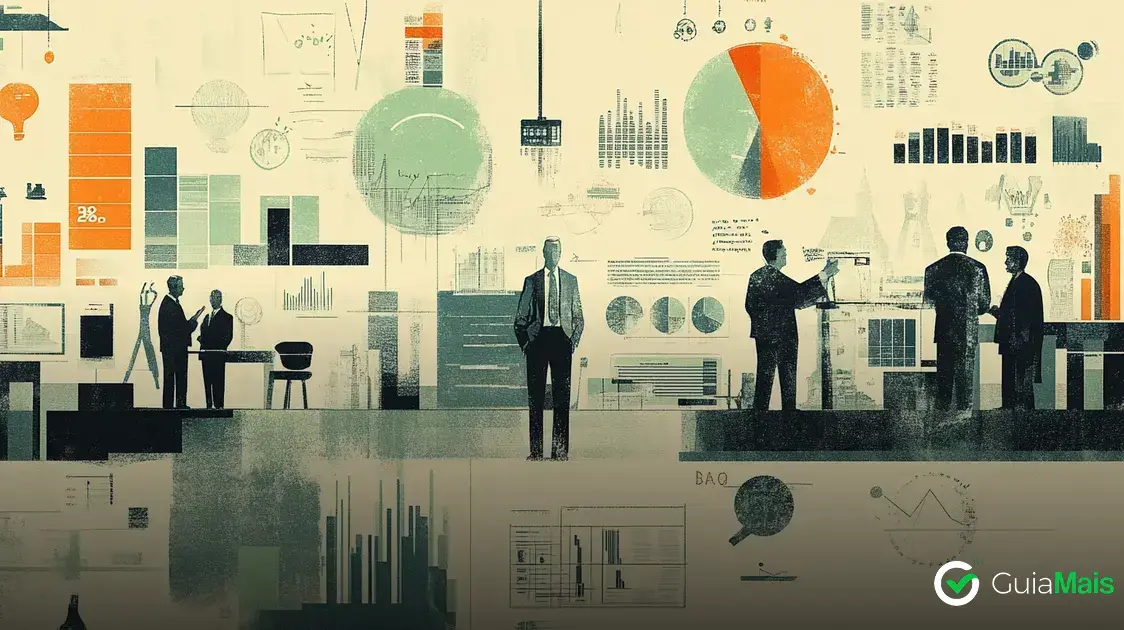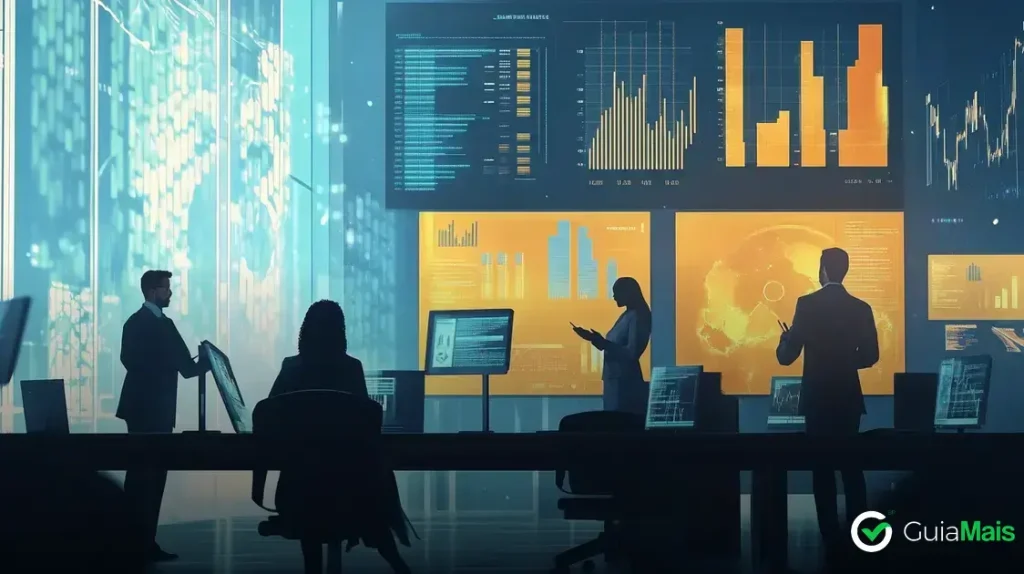In today’s rapidly changing world, understanding economic growth trends is crucial for individuals and businesses alike.
As economies evolve, being aware of these trends can provide insights into future opportunities and challenges.
Understanding Economic Growth Trends
Understanding economic growth trends is essential for anyone looking to navigate the financial landscape.
These trends reflect the overall increase in the production of goods and services in an economy over time.
It is crucial to analyse various factors that contribute to these trends, including technological advancements, consumer behaviour, and government policies.
The Importance of Economic Growth
Economic growth is a key indicator of the health of an economy. It influences job creation, income levels, and overall living standards.
When an economy grows, businesses expand, new jobs are created, and individuals experience improved purchasing power.
Factors Influencing Economic Growth Trends
Several factors play a role in shaping economic growth trends. These include:
- Investments: Increased investments in infrastructure, technology, and human capital directly contribute to economic growth.
- Consumer Spending: High levels of consumer confidence lead to increased spending, which stimulates production and investment.
- Government Policies: Supportive policies can enhance economic performance. Tax incentives and subsidies often encourage business investment.
- Global Events: Major events, such as financial crises or global pandemics, can disrupt growth trends, leading to recession or inflation.
By thoroughly understanding economic growth trends, individuals and businesses can make informed decisions.
These decisions can positively impact their financial futures and create opportunities for long-term success.
Key Indicators of Economic Growth
Key indicators of economic growth are essential for understanding the strength and performance of an economy.
These indicators provide insights into various aspects of economic activity and help predict future growth.
Some of the most significant indicators include:
- Gross Domestic Product (GDP): GDP is the total value of all goods and services produced in a country over a specific period. It is a primary indicator of economic performance.
- Employment Rates: High employment rates signal strong economic growth, as more job opportunities typically lead to higher consumer spending.
- Consumer Confidence Index (CCI): This index measures how optimistic consumers are about the economy. High confidence often correlates with increased spending, which fuels economic growth.
- Industrial Production: This reflects the output of various sectors, such as manufacturing and mining. An increase in industrial production indicates a thriving economy.
- Retail Sales: Rising retail sales indicate that consumers are spending more, an essential factor for economic growth.
- Inflation Rate: While moderate inflation is normal in a growing economy, high inflation can erode purchasing power and indicate potential economic trouble.
By monitoring these indicators, businesses and individuals can better understand current economic conditions and make informed decisions.
Impact of Policy on Economic Growth

The impact of policy on economic growth is significant and multifaceted.
Government policies can shape the economic environment in various ways, influencing business decisions, consumer confidence, and overall growth.
Key areas of policy that affect economic growth include:
- Tax Policies: Tax rates and incentives can encourage or discourage businesses from investing and expanding. Lower taxes on corporations can lead to increased investments, driving economic growth.
- Regulatory Framework: Policies that reduce red tape and streamline regulations can encourage entrepreneurship and innovation. Conversely, heavy regulations can stifle business growth and deter foreign investment.
- Public Spending: Investment in infrastructure, education, and healthcare can boost productivity and long-term growth. Well-planned public spending creates jobs and stimulates demand.
- Trade Policies: Trade agreements and tariffs affect the flow of goods and services between countries. Free trade agreements can open new markets for businesses, enhancing economic growth.
- Monetary Policy: Central banks influence economic growth through interest rates and monetary supply. Lower interest rates can encourage borrowing and investment, while high rates might slow economic activity.
- Labour Market Policies: Employment laws and minimum wage regulations can impact workforce participation and productivity. Supportive labour policies can enhance job growth and overall economic performance.
By understanding the relationship between policy and economic growth, businesses and policymakers can make informed decisions.
These decisions help foster a healthy economic environment and promote sustainable development.
Global Economic Growth Trends
Global economic growth trends refer to the patterns of growth observed across different countries and regions.
These trends can vary widely depending on socio-economic factors, technological advancements, and geopolitical influences.
Key elements to consider include:
- Emerging Markets: Countries like India, Brazil, and parts of Africa are experiencing rapid growth driven by a young population, increasing urbanization, and expanding middle class. This creates new opportunities in industries such as technology and consumer goods.
- Developed Economies: Nations like the United States and Germany maintain steady growth. However, they face challenges such as ageing populations and the need for innovation to remain competitive.
- Technology and Innovation: Technological advancements are transforming traditional industries and creating new sectors. The rise of digital economies, renewable energy, and artificial intelligence are prime examples of how innovation drives growth globally.
- Trade Dynamics: Global trade relations can significantly influence economic growth trends. Changes in trade agreements, sanctions, or tariffs can affect exports and imports, impacting growth rates.
- Environmental Concerns: The growing focus on sustainability and climate change is reshaping economic growth. Economies are adjusting to greener practices, which can create both challenges and opportunities for growth.
- Global Pandemics: Events like the COVID-19 pandemic have shown how quickly economic growth can be affected. Recovery efforts in various regions highlight the need for resilience and adaptability in economic practices.
By examining global economic growth trends, businesses and investors can anticipate future opportunities.
This preparation allows them to navigate challenges more effectively in the international market.
Sector-Specific Economic Growth Trends
Sector-specific economic growth trends highlight how different industries contribute to overall economic performance.
Each sector reacts uniquely to economic changes, influenced by consumer behaviour, technological advancements, and global dynamics. Here are some key sectors to consider:
- Technology: The technology sector continues to experience robust growth, driven by innovations in artificial intelligence, cloud computing, and cybersecurity. Companies are investing heavily in R&D, leading to new products and services that enhance productivity.
- Healthcare: The healthcare industry is expanding rapidly, particularly in telemedicine and biotechnology. The global pandemic has accelerated digital health solutions, showcasing the sector’s resilience and capacity for growth.
- Finance: The financial sector is evolving with the rise of fintech companies and digital currencies. Traditional banks are adapting to new technologies to meet the changing needs of consumers, driving sector growth.
- Renewable Energy: There is a significant shift towards renewable energy sources such as solar and wind power. This sector’s growth is driven by increased environmental awareness and government incentives to reduce carbon emissions.
- Retail: The retail sector is transforming with the rise of e-commerce. Online shopping has surged, prompting traditional retailers to adapt their strategies to remain competitive in a digital marketplace.
- Manufacturing: Manufacturing growth is influenced by automation and smart technologies. Industries are increasingly adopting Industry 4.0 practices, which enhance efficiency and reduce costs.
Understanding sector-specific economic growth trends helps businesses and investors spot expansion opportunities.
This knowledge enables them to align their strategies for greater success.
Future Predictions for Economic Growth

Future predictions for economic growth involve analysing various trends and expert forecasts.
By looking at current data and emerging patterns, we can adjust our expectations for the economy moving forward.
Several key areas are likely to shape future economic growth:
- Technological Advancements: Innovation in technology will continue to drive economic growth. Emerging technologies such as artificial intelligence, blockchain, and automation will enhance productivity and create new job opportunities across various sectors.
- Shifts in Consumer Behaviour: As consumers adapt to digital environments, e-commerce is expected to grow. Businesses need to embrace online strategies to meet changing shopping habits to remain competitive.
- Global Trade Relationships: As countries develop new trade partnerships, economic growth could accelerate. Positive trade agreements can open doors for businesses, improving access to international markets.
- Environmental Sustainability: The push for green economies will influence growth. As companies invest in sustainable practices and renewable energy, new sectors will emerge, contributing to economic expansion.
- Demographic Changes: Changes in population, such as ageing populations in developed countries, can affect economic dynamics. Policies that support workforce participation will be crucial for maintaining growth.
- Government Policies: Future growth will be affected by fiscal policies and regulatory changes. Supportive government initiatives can drive investment and create an environment conducive to economic expansion.
By monitoring these factors, individuals and businesses can anticipate changes in the economic environment.
This awareness helps them identify opportunities for growth and adapt their strategies accordingly.
Understanding Economic Growth Trends for a Prosperous Future
As we have explored, economic growth trends are influenced by various factors, including technology, policy, and global dynamics.
By understanding these trends, individuals and businesses can make informed decisions that contribute to their success.
From the importance of key indicators to the impact of policies and specific sector analyses, recognising these elements equips stakeholders to navigate the complexities of the economy.
Looking ahead, the future predictions for economic growth suggest a landscape filled with opportunities derived from innovation, sustainability, and changing consumer behaviour.
It is crucial to embrace adaptability and foresight to capitalise on these trends.
In summary, being aware of economic growth trends is essential for fostering a robust economic environment, paving the way for a prosperous and sustainable future.





